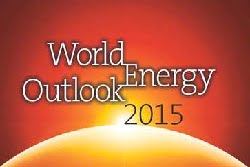As the world’s energy demand grows by nearly one-third over the next 35 years, this net growth will be driven entirely by developing countries according to the IEA’s World Energy Outlook 2015 (WEO-2015) report. The links between global economic growth, energy demand and energy-related emissions weaken: some markets (such as China) undergo structural change in their economies and others reach a saturation point in demand for energy services. All adopt more energy efficient technologies, although a prolonged period of lower oil prices could undercut this crucial pillar of the energy transition; diminished incentives and longer payback periods mean that 15% of the energy savings are lost in a low oil price scenario. Lower prices alone would not have a large impact on the deployment of renewables, but only if policymakers remain steadfast in providing the necessary market rules, policies and subsidies.
In advance of the critical COP21 climate summit in Paris, there are clear signs that an energy transition is underway: renewables contributed almost half of the world’s new power generation capacity in 2014 and have already become the second-largest source of electricity (after coal) and developing nations are working on putting themselves right in the heart of this.
The coverage of mandatory energy efficiency regulation has expanded to more than one-quarter of global energy consumption. The climate pledges submitted in advance of COP21 are rich in commitments on renewables and energy efficiency, and this is reflected in the WEO-2015 finding that renewables are set to become the leading source of new energy supply from now to 2040. Their deployment grows worldwide, with a strong concentration in the power sector where renewables overtake coal as the largest source of electricity generation by the early-2030s. Renewables-based generation reaches 50% in the EU by 2040, around 30% in China and Japan, and above 25% in the United States and India.
The net result of the changes seen in the WEO-2015 central scenario is that the growth in energy-related emissions slows dramatically, but the emissions trajectory implies a long-term temperature increase of 2.7o C by 2100. A major course correction is still required to achieve the world’s agreed climate goal. “As the largest source of global greenhouse-gas emissions, the energy sector must be at the heart of global action to tackle climate change,” said Dr Birol. “World leaders meeting in Paris must set a clear direction for the accelerated transformation of the global energy sector. The IEA stands ready to support the implementation of an agreement reached in Paris with all of the instruments at our disposal, to track progress, promote better policies and support the technology innovation that can fulfil the world’s hopes for a safe and sustainable energy future.”

